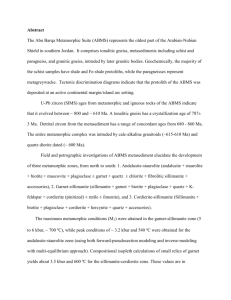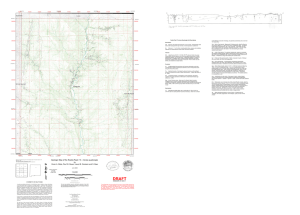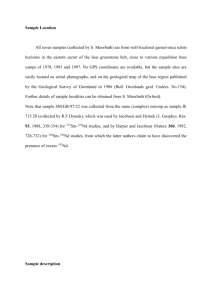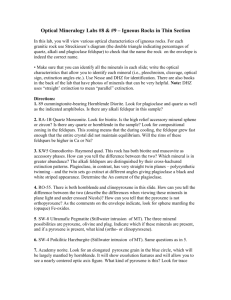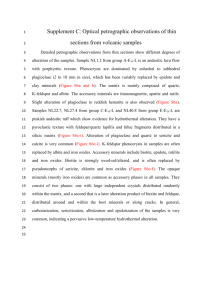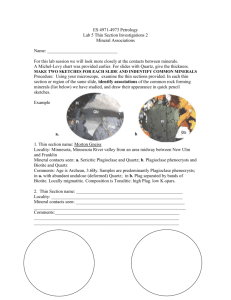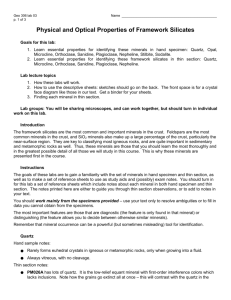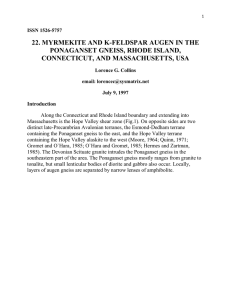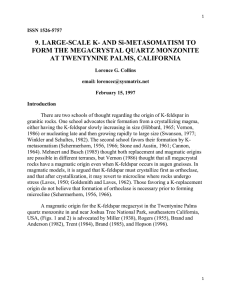Pavlína HASALOVÁ, Karel SCHULMANN
advertisement
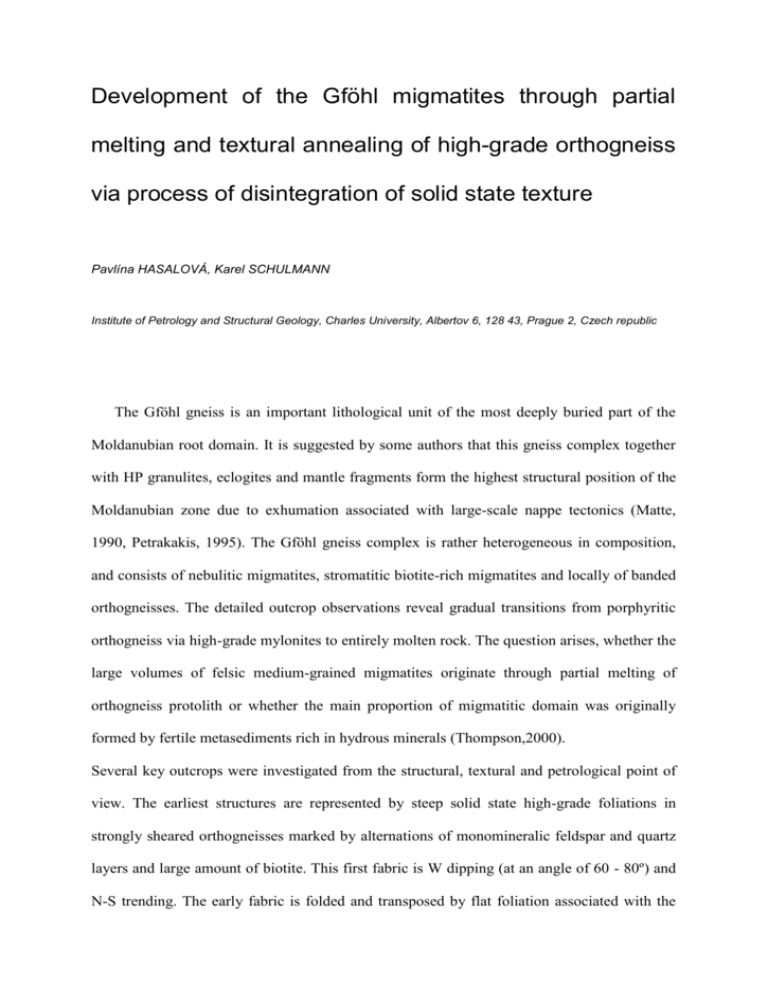
Development of the Gföhl migmatites through partial melting and textural annealing of high-grade orthogneiss via process of disintegration of solid state texture Pavlína HASALOVÁ, Karel SCHULMANN Institute of Petrology and Structural Geology, Charles University, Albertov 6, 128 43, Prague 2, Czech republic The Gföhl gneiss is an important lithological unit of the most deeply buried part of the Moldanubian root domain. It is suggested by some authors that this gneiss complex together with HP granulites, eclogites and mantle fragments form the highest structural position of the Moldanubian zone due to exhumation associated with large-scale nappe tectonics (Matte, 1990, Petrakakis, 1995). The Gföhl gneiss complex is rather heterogeneous in composition, and consists of nebulitic migmatites, stromatitic biotite-rich migmatites and locally of banded orthogneisses. The detailed outcrop observations reveal gradual transitions from porphyritic orthogneiss via high-grade mylonites to entirely molten rock. The question arises, whether the large volumes of felsic medium-grained migmatites originate through partial melting of orthogneiss protolith or whether the main proportion of migmatitic domain was originally formed by fertile metasediments rich in hydrous minerals (Thompson,2000). Several key outcrops were investigated from the structural, textural and petrological point of view. The earliest structures are represented by steep solid state high-grade foliations in strongly sheared orthogneisses marked by alternations of monomineralic feldspar and quartz layers and large amount of biotite. This first fabric is W dipping (at an angle of 60 - 80º) and N-S trending. The early fabric is folded and transposed by flat foliation associated with the development of fine-grained mylonites. These high-grade mylonites progressively pass into migmatitic gneiss rich in sillimanite and garnet, and finally into completely molten felsic leucosomes. The new planar system is E-W trending (at an angle of 15 - 40º) and bears N – S oriented mostly subhorizontal lineation.We sampled two sections in which the above transition from banded orthogneiss to nebulitic migmatite was observed. The aim of this work is to understand the melting process of high-grade orthogneiss, i.e., relatively refractory rock using a detailed petrologial and textural analysis. We have distinguished and documented four textural stages from the orthogneiss to nebulitic migmatites. The first one is represented by fine-grained banded ortogneiss with distinctly separated monomineral layers. The K-feldspar layers 0.75 – 2 mm thick consist of grains 0.5 mm in size with straight boundaries. Numerous rounded inclusions of quartz (0.01 mm in size) occur mostly at triple points. A polygonal mosaic of well-equilibrated plagioclase 0.2 - 0.3 mm large forms layers 0.25 - 1.25 mm thick. Quartz occurs in 0.7 - 0.1 mm thick polycrystalline ribbons. Large flakes of biotite, locally overgrown by sillimanite (< 5%), form bands separating quartz from plagioclase aggregates. Small garnet (0.07 – 0.1mm in size) is associated with biotite aggregates. The second stage is characteristic of grain coarsening and disappearance of monomineralic layering. The K-feldspar-rich aggregates are composed of K-feldspar (80%) grains (0.6 mm in size) with straight boundaries and numerous inclusions of quartz (20%) and biotite. Plagioclase-rich layers are composed of plagioclase (80%), quartz (20%), biotite flakes, and rounded garnet grains (0.5 – 0.9 mm in size) + sillimanite. Quartz forms irregular aggregates composed of large grains (0.4 - 0.6 mm in size) with strongly lobate boundaries. The third stage is marked by change in the proportion and size of individual minerals and by the increase in sillimanite content. Former plagioclase-rich layers show almost granite-like texture being composed of almost equivalent amount of plagioclase and quartz as well as minor amount of K-feldspar. The K-feldspar layers consist of large irregular grains of Kfeldspar and small plagioclase grains. The K-feldspar/quartz ratio is 1:1. The plagioclase and K-feldspar layers are separated by sillimanite aggregates. No relics of original layering can be observed in the nebulitic migmatite. The grain boundaries of minerals in individual stages were “traced” in the GIS Arc View environment and analysed using The Matlab™ Poly LX toolbox (Lexa, 2001), where statistical analysis of grain size, grain contact frequencies, modal compositions and grain boundaries and shapes were performed. This study permits to quantify the textural evolution of mineral aggregates from solid state to random anatectic structure. The detailed microprobe work, currently in progress, is carried out to estimate the PT conditions of textural annealing and melting. Basing on these data, an attempt is made to propose a model of textural annealing and melting explaining the disintegration of the original solid state texture and development of large volumes of nebulitic migmatites in the Gföhl unit. References: PETRAKAKIS K.,1995. High – grade metamorphism and retrogression of Moldanubian granulites, Austria. Eur J Mineral, 7(5): 1183 –1203. MATTE P., MALUSKI H., RAJLICH P. and FRANKE W.,1990. Terrane boundaries in the Bohemian Massif; result of large-scale Variscan shearing. Tectonophysics,177: 151-170. THOMPSON A. B., GARDIEN V. and ULMER P.,2000. Melting of biotite plus plagioclase plus quartz gneisses: the role of H2O in the stability of amphibole. J Petrol, 41(5): 651-666.
